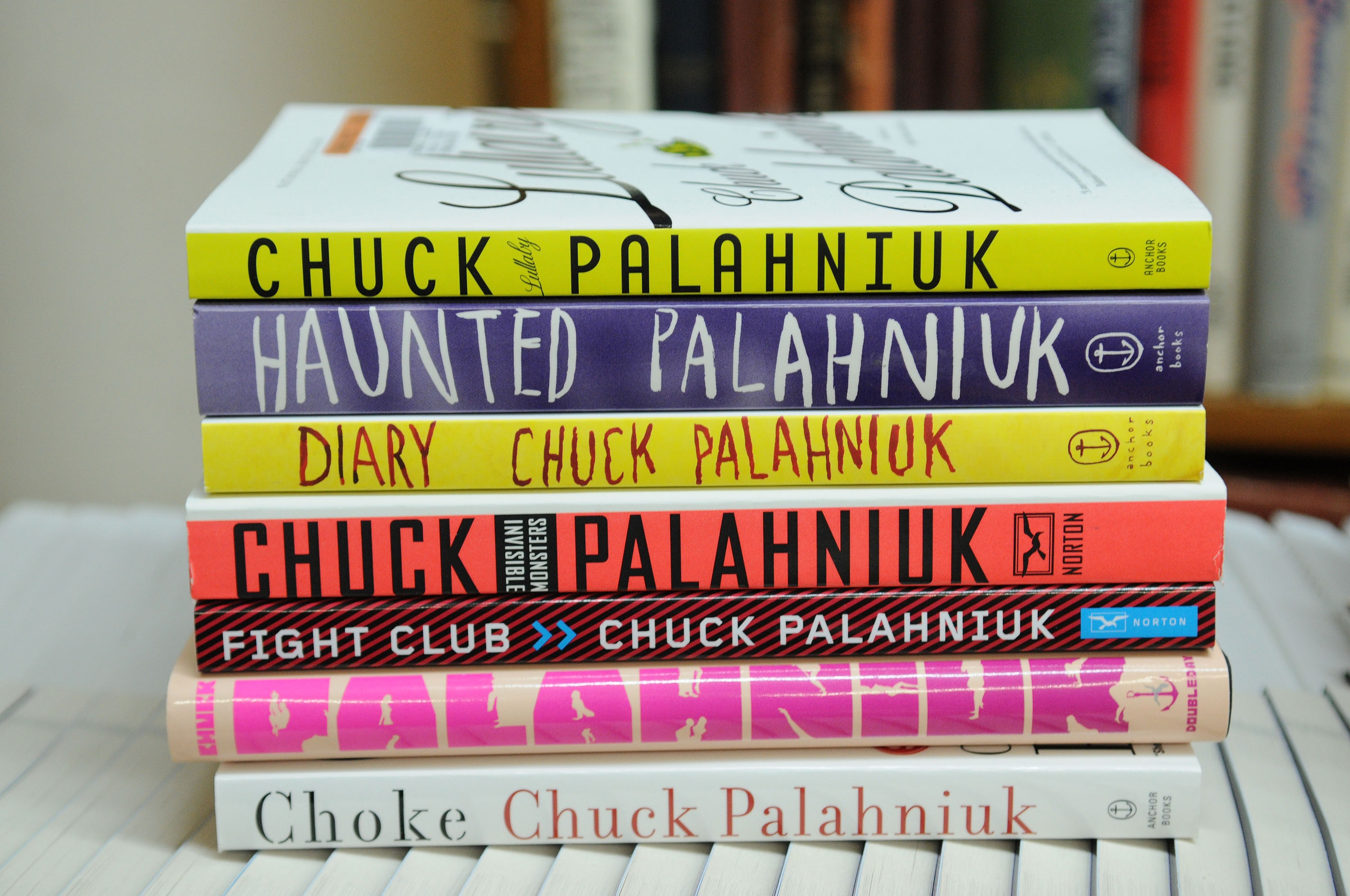Chuck Palahniuk Books: A Deep Dive into the Dark and Twisted Worlds of a Literary Master

Chuck Palahniuk, a name synonymous with raw, visceral storytelling and unflinching portrayals of societal anxieties, has captivated readers for decades. His novels, often categorized as dark satire, psychological thrillers, and sometimes even horror, are characterized by their shocking content, unreliable narrators, and exploration of the darker aspects of human nature and modern life. This exploration delves into the world of Chuck Palahniuk’s books, examining their genres, recurring themes, cultural impact, and lasting literary influence. We’ll also consider the educational value, life lessons, and reading habits his works inspire. Finally, we’ll touch upon the availability of his books in various libraries, both physical and digital.

The Genres and Themes of Palahniuk’s Fiction
Palahniuk’s work defies easy categorization, blending genres in unexpected and often disturbing ways. While his debut novel, Fight Club, propelled him to fame and established his signature style, his subsequent works demonstrate a remarkable versatility and willingness to experiment. His books frequently traverse the boundaries between:
1. Dark Satire:
Many of Palahniuk’s novels are darkly satirical commentaries on consumerism, masculinity, societal expectations, and the human condition. He uses exaggeration, irony, and grotesque imagery to expose the hypocrisies and absurdities of modern life. Fight Club, for instance, satirizes the emptiness of consumer culture and the alienation experienced by men in a patriarchal society. Invisible Monsters critiques the beauty industry and its impact on self-perception. Choke satirizes the healthcare system and the moral compromises people make in the pursuit of survival.

2. Psychological Thriller:
Palahniuk masterfully crafts psychological thrillers, often featuring unreliable narrators whose perspectives are skewed, fragmented, or even entirely fabricated. This technique forces the reader to question the narrative’s veracity and actively participate in unraveling the truth alongside the protagonist. Survivor is a prime example, with its unreliable narrator recounting a harrowing and potentially false story from 39,000 feet in the air. Lullaby features a character who stumbles upon an ancient African death spell, creating a suspenseful and disturbing narrative about the power of words and the consequences of unwitting actions.
3. Horror:

While not solely a horror writer, Palahniuk frequently incorporates elements of horror into his work. This is not the typical jump-scare horror; rather, he employs a psychological and visceral form of horror that focuses on the unsettling aspects of reality and the darker recesses of the human psyche. The violence and disturbing themes found in Fight Club and Rant are a testament to this. Even seemingly less violent works, like Invisible Monsters, have moments of intense psychological horror.
Recurring Themes:
Across his diverse body of work, several key themes consistently emerge:
- The deconstruction of masculinity: Palahniuk’s male characters frequently struggle with traditional notions of masculinity, often exhibiting violence, self-destruction, and a deep sense of alienation.
- The critique of consumerism: The pervasive influence of consumer culture and its impact on individual identity is a recurring target of his satire.
- The exploration of violence and its causes: Palahniuk doesn’t shy away from depicting violence, but he often uses it to explore its underlying causes in societal structures and individual psychology.
- The examination of societal taboos: He consistently challenges societal norms and pushes boundaries, exploring topics such as sex, death, and violence with graphic detail and unflinching honesty.
- The search for meaning and identity in a chaotic world: His characters frequently grapple with existential questions, searching for meaning and purpose in a world that often seems meaningless and absurd.
Chuck Palahniuk: Authorial Style and Influences
Palahniuk’s distinctive writing style contributes significantly to the impact of his work. He employs several notable techniques:
- Unreliable narration: As mentioned, this creates ambiguity and suspense, forcing the reader to actively question the narrative.
- Short, fragmented sentences: This creates a sense of urgency and immediacy, mirroring the chaotic experiences of his characters.
- Repetitive phrases and motifs: These reinforce key themes and create a hypnotic, almost mantra-like effect.
- Graphic and visceral descriptions: He utilizes vivid imagery and detailed descriptions to immerse the reader in the disturbing realities of his characters’ worlds.
- Dark humor: This offsets the darker aspects of his narratives, creating a complex and unsettling tone.
Regarding his literary inspirations, Palahniuk’s work bears the influence of several authors, including:
- Kurt Vonnegut: The darkly satirical and absurdist elements in Palahniuk’s work echo Vonnegut’s signature style.
- Don DeLillo: The exploration of societal anxieties and the alienation of modern life are themes shared by both authors.
- Thomas Ligotti: The unsettling and deeply psychological elements of horror in Palahniuk’s work find parallels in Ligotti’s cosmic horror.
- R. Crumb: The raw, grotesque, and often unsettling imagery in Palahniuk’s novels shares similarities with Crumb’s distinctive artistic style.
These influences, however, are filtered through Palahniuk’s own unique voice and perspective, resulting in a distinctly original and impactful body of work.
Educational Value, Life Lessons, and Reading Habits
While often considered controversial, Palahniuk’s books offer significant educational value and life lessons, albeit often indirectly. His work encourages:
- Critical thinking: The unreliable narrators and ambiguous narratives necessitate critical engagement and interpretation from the reader.
- Self-reflection: The unsettling explorations of human nature and societal issues can prompt readers to confront their own beliefs and biases.
- Empathy (perhaps unexpectedly): Despite the often disturbing content, Palahniuk’s characters are often complex and flawed individuals, allowing readers to develop empathy even for those who commit reprehensible acts.
- Understanding of societal issues: His books offer a critical lens through which to examine important issues such as consumerism, masculinity, and the darker side of human behavior.
The reading habits inspired by Palahniuk’s work can vary greatly. Some readers may be drawn to his fast-paced, shocking narratives, while others may appreciate his satirical wit and thought-provoking themes. His books often provoke discussion and debate, encouraging a more active and critical approach to reading.
Chuck Palahniuk’s Cultural Impact and Literary Influence
Palahniuk’s impact on culture and literature is undeniable. Fight Club, in particular, transcended its literary origins to become a cultural phenomenon, influencing film, music, fashion, and even philosophy. Its impact on the broader culture extends beyond the film adaptation and permeates social discourse. The novel’s themes of rebellion, anti-consumerism, and the search for authentic identity still resonate with contemporary audiences.
His influence on subsequent writers is also evident in the rise of dark satire and psychological thrillers in recent years. Many contemporary authors share Palahniuk’s willingness to confront uncomfortable truths and explore the darker side of human experience. His books have earned numerous accolades, further solidifying his position as a significant literary figure.
Adaptations of Palahniuk’s work to other media, such as film and television, have further extended his reach. Fight Club, Choke, and other works have been successfully adapted, demonstrating the adaptability of his themes and narrative structures to different media.
Libraries and Access to Chuck Palahniuk’s Books
Chuck Palahniuk’s books are widely available in various libraries, both physical and digital. Lbibinders.org and other online library catalogs allow users to search for his titles and check their availability. Public libraries across the globe typically hold copies of his most popular works, offering a valuable resource for readers who prefer print.
Digital libraries, such as those associated with Lbibinders.org and other online platforms, provide access to ebooks and audiobooks. This digital accessibility expands the reach of his work to a wider audience, providing convenient access for readers globally. Furthermore, some rare book collections and archives may contain special editions or early manuscripts of his works, offering opportunities for scholarly research.
In conclusion, Chuck Palahniuk’s impact on literature and popular culture is significant and multifaceted. His distinctive style, exploration of dark themes, and willingness to challenge societal norms continue to resonate with readers. His books, available in various forms and locations through Lbibinders.org and other resources, offer a valuable and thought-provoking reading experience, sparking critical thinking and fostering self-reflection.